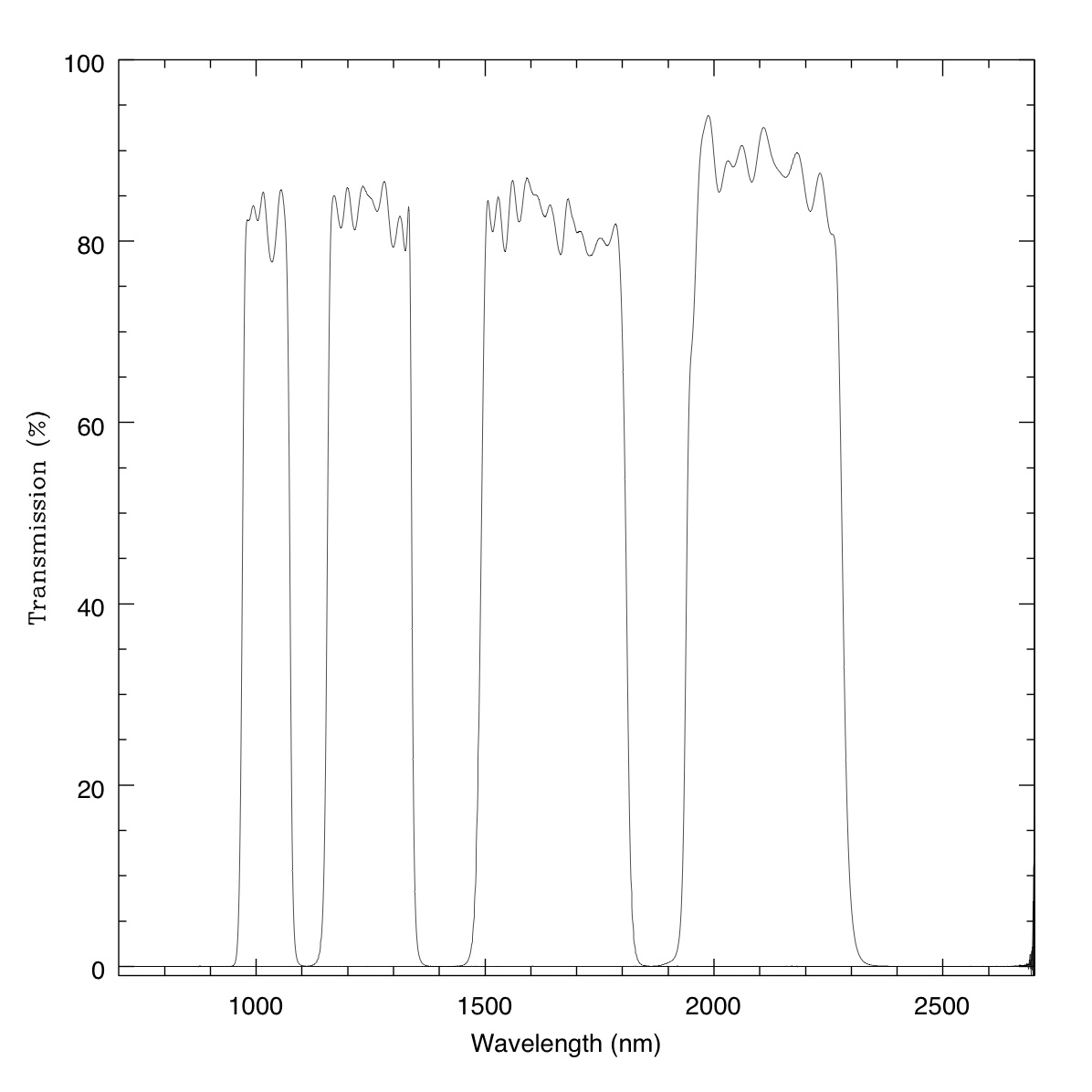NIIS Optical Design
NIIS Optical Design
The optical design of NIIS was developed by Charles Harmer (NOAO) and is based on his design of the FLAMINGOS imaging spectrograph at Gemini. The primary difference being that NIIS is designed with a faster camera and a wider field of view, a full 17-arcmin at the Apache Point 3.5-meter telescope. The design features three primary sub-assemblies, or "stacks":
1) Two element corrector
2) Four element collimator
3) Eight element camera
All lenses were manufactured at room temperature and atmospheric pressure and ZEMAX was used to convert the design at vacuum and LNS temperature to room temperature and atmospheric pressure. The optical design was optimized for a wavelength range of 0.9 μm ‹ &955; ‹ 2.8 μm.
The lenses were manufactured, diamond-turned, and tested at Optical Solutions Incorporated (http://www.opticalsolutionsinc.com). They also mounted each lens in its cryo-mechanical mount using a precision air-bearing table. The mounted lenses were then shipped to Wyoming where they were mounted into the three lens stacks within NIIS.
Click on images below for full size.
The 3D layout is shown in the following two pictures:The Spot Diagram:
The RMS vs. Field angle:
The Filter Transmission Curves:

Standard broad-band, near-infrared filters available in NIIS. Left to right are shown the Y, J, H, and K' transmission curves. The links below provide text files of the individual transmission curves.
NIIS Braod-band Transmission Curves:
Y-band Transmission Curve
J-band Transmission Curve
H-band Transmission Curve
K'-band Transmission Curve